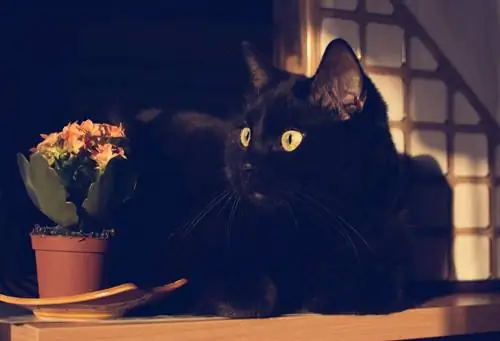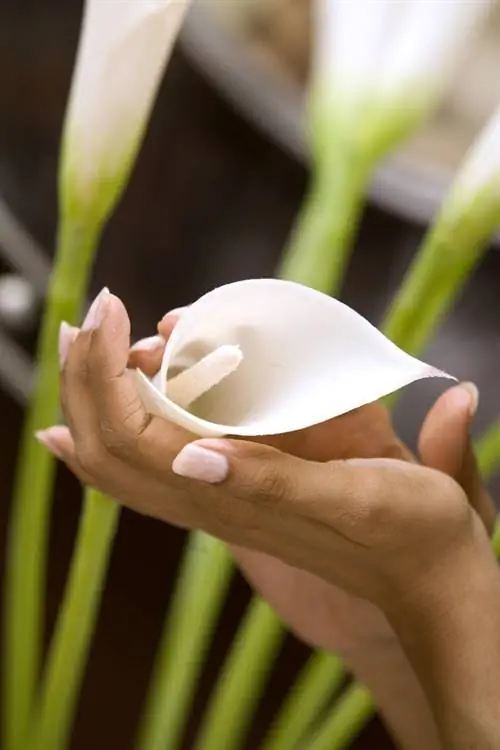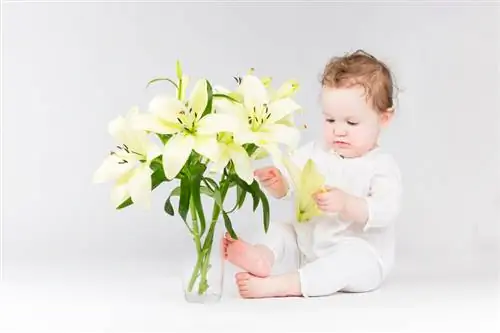- Author admin [email protected].
- Public 2023-12-16 16:46.
- Last modified 2025-01-23 11:21.
The different Kalanchoe species beautify living spaces and terraces with their interesting foliage and, depending on the species, their brightly colored flowers. Extremely robust, it is not affected by dry periods or summer heat. But especially in households where children or pets live, it is important to only use non-toxic plants.

Are Kalanchoe plants poisonous to humans and animals?
Some species of Kalanchoe, such as the Flaming Cat, are considered non-toxic to humans, but can cause vomiting and abdominal pain in children. Other species such as Kalanchoe Beharensis are poisonous and can cause vomiting, diarrhea, cardiovascular problems. Kalanchoe plants are generally poisonous to cats.
Not all Kalanchoe species are non-poisonous
The Kalanchoe most commonly cared for indoors is probably the Flaming Käthchen. With its brightly colored flowers and attractive leaves, it is a rewarding and easy-to-care room decoration that also thrives on the terrace.
The Flaming Cat is considered non-toxic, although the ingredients of the ornamental plant are largely unexplored. However, it has also been reported that a baby suffered from vomiting and stomach pain after eating above-ground plant parts.
Other Kalanchoe species such as Kalanchoe Beharensis, however, are considered poisonous because they contain, for example:
- cardiac glycosides
- Hellebrigenin glycosides
that lead to symptoms like
- Vomiting
- Diarrhea
- Cardiovascular problems
can lead.
These plants must under no circumstances be placed within the reach of children.
Cat owners beware
Even though many Kalanchoe species are non-toxic for us humans, even babies, this unfortunately does not apply to velvet paws. Cats react quite sensitively to the acids contained in the leaves. If the animal eats from the plant, it can:
- difficulty breathing
- Shaking convulsions
- Paralysis
perform.
For this reason, it is better to avoid Kalanchoes in cat households or at least to place them in such a way that your four-legged roommates cannot snack on them.
Tip
As with all houseplants, even if a plant is considered non-toxic, it should be positioned so that babies and small children cannot reach the plants. Active ingredients that are relatively harmless to adults can cause much more severe symptoms in children.






